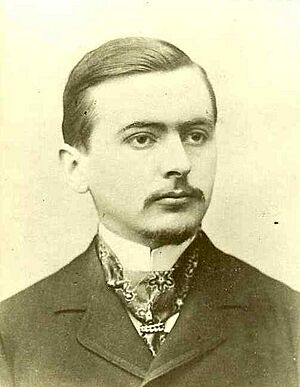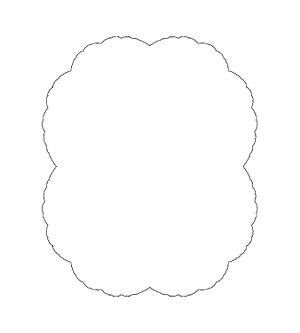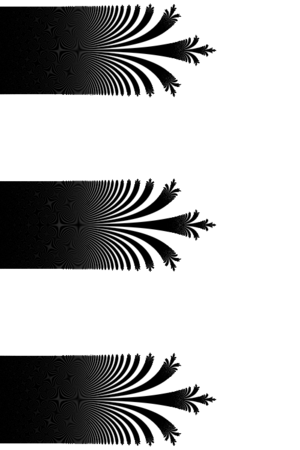Pierre Fatou facts for kids
Quick facts for kids
Pierre Fatou
|
|
|---|---|
 |
|
| Born | 28 February 1878 Lorient, France
|
| Died | 9 August 1929 (aged 51) Pornichet, France
|
| Alma mater | École Normale Supérieure |
| Known for |
|
| Scientific career | |
| Fields | Mathematics |
| Institutions | Paris Observatory |
| Doctoral advisor | Paul Painlevé |
Pierre Joseph Louis Fatou (born February 28, 1878 – died August 9, 1929) was a smart French mathematician and astronomer. He is famous for his big ideas in a part of mathematics called analysis. Some important math ideas, like the Fatou lemma and the Fatou set, are named after him.
About Pierre Fatou
Pierre Fatou was born in Lorient, France. His parents, Prosper Ernest Fatou and Louise Eulalie Courbet, both worked in the military. His family hoped he would join the military too. However, Pierre's health was not strong enough for a military career.
In 1898, Fatou started studying mathematics at the École Normale Supérieure in Paris. This was a very good school. He finished his studies in 1901. After graduating, he began working at the Paris Observatory.
He started as an intern, then became an assistant astronomer in 1904. Later, in 1928, he became a full astronomer. He continued to work at the observatory until he passed away.
Pierre Fatou received the Becquerel prize in 1918 for his work. He was also made a knight of the Legion of Honour in 1923. This is a very high award in France. In 1927, he was the president of the French mathematical society. He was good friends with other French mathematicians, like Maurice René Fréchet and Paul Montel.
In the summer of 1929, Fatou went on vacation to Pornichet. This is a town by the sea in France. He died suddenly in his room there on August 9, 1929. His nephew, Robert Fatou, later wrote that Pierre never saw a doctor. Pierre Fatou was buried in the Carnel Cemetery in Lorient.
Pierre Fatou's Math Discoveries
Pierre Fatou's work greatly influenced how analysis developed in the 20th century.
His PhD paper was called Séries trigonométriques et séries de Taylor. In this paper, he was one of the first to use a new math tool called the Lebesgue integral. He used it to solve problems with special types of math functions. He looked at how these functions behaved inside a circle.
In 1906, Fatou published the Fatou theorem. This theorem explains that certain math functions have limits almost everywhere on a circle. This discovery led to a lot of new research in mathematics.
Fatou also found important results about how Taylor series can be extended. Taylor series are a way to show functions as an endless sum of terms.
Between 1917 and 1920, Fatou started a new area of math called holomorphic dynamics. This field looks at what happens when you repeat a math process using analytic functions. He was the first to describe and study the set now called the Julia set. The area around this set is sometimes called the Fatou set. Other mathematicians, like Gaston Julia, also found similar results around the same time. Holomorphic dynamics became very popular again in the 1980s. In 1926, Fatou also started studying the dynamics of transcendental functions.
While working on holomorphic dynamics, Fatou found something called Fatou–Bieberbach domains. These are special areas in complex space that are similar to the whole space, even though they are only a part of it. These kinds of areas cannot exist in a simple 2D space.
Fatou also did important work in celestial mechanics. This is the study of how planets and other objects move in space. He was the first to prove a theorem about how small forces affect the movement of planets. This work was later continued by other scientists and became a big part of modern applied mathematics. Fatou also studied how a planet moves when there is something slowing it down.
See also
 In Spanish: Pierre Fatou para niños
In Spanish: Pierre Fatou para niños
- Fatou conjecture
- Fatou's theorem
- Fatou set
- Fatou–Lebesgue theorem (same as Fatou's lemma)
- Classification of Fatou components
- Fatou–Bieberbach domain
- Holomorphic dynamics





